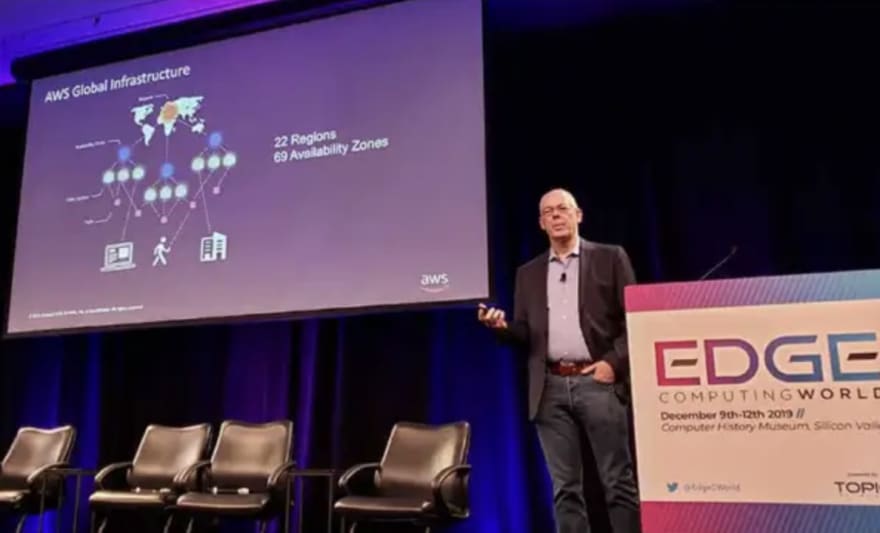I was at the DevOps Enterprise Summit and saw a talk by Mik Kersten on Project to Product (great book). Afterwards, I spoke to Mik Kersten, and was very impressed with his thinking, which echoed mine. We have both been on the same thought journey. And the solution he developed with his company, Tasktop, is amazing.
Fast forward two years, and Adrian Cockcroft (VP of Cloud Architecture Strategy at AWS) suggested I connect with Mik Kersten. Happily I ended up guesting on the Mik + One podcast. Adrian Cockcroft and his thoughts on existence proof feature on Mik Kersten’s latest podcast and I want to urge you to listen to it as I think it’s an enlightening and powerful conversation. Follow the podcast:
There are many links (which are all in the show notes). I’ll repost some here, so you don’t miss them.
Existence Proof
I find with technology, that there are lots of ideas running around your head, and it’s very rare that someone can capture the thought process. Adrian Cockcroft is one of the few that can. The conversation in this episode fascinating and it was nice that they mentioned my podcast with Mik.
One of the main anchors of their conversation is “Time to Value”. This is a key metric when you develop software and it requires a lot of sense-making and expertise. Related to that is the concept of ‘Existence Proof’ that Adrian talks about – sometimes you have a whacky idea, you develop it and think it looks interesting, and then you watch to see if it emerges.
Time to value
With a serverless-first approach and mindset, you are delivering value to your customers/users in less time than another team has finished configuring Kubernetes. Controversial, but I thought it was interesting. Kubernetes has its place, but to quote Adrian Cockcroft: “you can finish building your app in less time than another team can decide on how to configure Kubernetes”.
MicroServices
Early in the conversation, the guys discuss the early days of microservices and predicting that “this will be a thing”. Sometimes you need to go out to market and talk about a concept. I still remember when Adrian Cockcroft starting talking about microservices at Netflix – you know these things are landing when people at work are talking about “the microservices guy – I can’t remember his name”. Story first, names come later…
Chaos and resiliency
Netflix was also pioneering chaos testing and bringing improved resiliency practices into how we thinking about software – especially in the cloud. I have been implementing many of these ideas with Well-Architected and the current approach is being referred to as Continuous Resiliency. I have certainly watched this technique become more mainstream.
Serverless First
Next up is Serverless-First, as an incoming trend. It’s a little behind the first two, but you can see it growing all the time. There’s more and more interest in this approach.
Wardley Mapping
Also called out as an incoming trend is Wardley Mapping. Of course, at the Serverless Edge, we have already been converted, but it’s great to see the approach spreading. Adrian Cockroft describes a way of “mapping your tech stack” and predicting movement. This is an approach I have been using for several years and it is extremely effective.
Sustainability
The final trend is going to be huge in technology. It needs no introduction, but very interesting to hear how Adrian Cockcroft describes the role that Cloud providers like AWS can play. Basically, if you take a specific approach, then they can optimise centrally. A great starting point is to take a serverless first approach and focus on the Cost-Optimisation pillar of the Well-architected framework. If you minimise your compute and your cost, then you are using less resources, therefore more sustainable (may sound over-simplistic, but there’s great power in simplicity).
Do listen to this podcast – I think episode 24 with Adrian is an excellent narrative. He also references his “Innovation at speed” talk from 2019 and the “Architecture trends 2021” talk from 2020 – both are worth a listen. The interesting thing for me, I have been using the technique of “existence proof” for many years, but great to hear Adrian give it a name. Sometimes the greatest talent that Architects have is the ability to name things, therefore hiding the complexity. This is a double-edged sword. Why? Sure all Einstein did was write “E = mc squared” – that was easy…
- Existence Proof podcast
- Innovation talk at AWS re: Invent
- Architecture trends talks at AWS re:Invent 2020
- Cloud for CEO’s ebook is worth a download (free)
There are loads more fantastic “Project to Product” podcasts here, including:



Top comments (0)